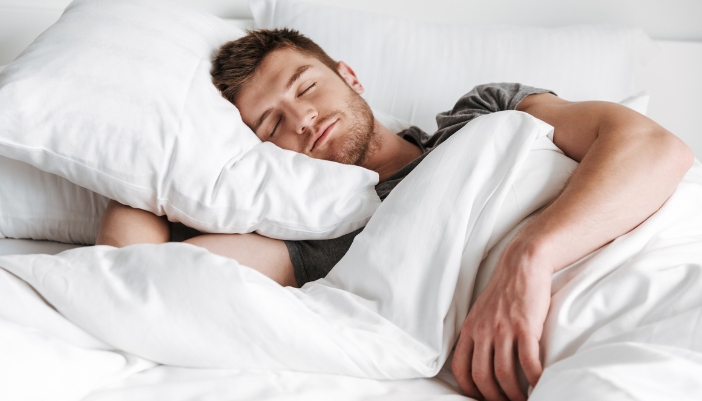We've all heard the terms "early bird" and "night owl," but have you ever stopped to think about how these natural inclinations affect our sleep? Beyond just preferences, our internal body clock plays a significant role in determining our energy peaks and lulls throughout the day. But here's the kicker: it's not just about when you feel most awake or sleepy. Your circadian rhythm can influence everything from your body temperature to how you respond to light. And guess what? Your mattress and sleep environment play a starring role in this nightly performance.

The Inner Clock: How Our Bodies Stay in Sync with Day and Night
Ever wondered why you feel sleepy at certain times and wide awake at others? That's the magic of your circadian rhythm. Think of it as your body's internal clock, running quietly in the background, guiding not just your sleep-wake cycle, but also your hunger and mood. This rhythm follows roughly a 24-hour cycle and is deeply influenced by the sun's patterns of light and darkness.
While our genes have a say in setting our internal clock, it's not just about DNA. External factors, especially light exposure and our daily routines, can shift this rhythm. Ever noticed how staying up late or jetting across time zones can throw you off? That's your circadian rhythm getting disrupted.
This rhythm matters—a lot. When it's consistent, we enjoy better sleep, a more balanced mood, and overall better health. But when it's out of sync? That can lead to everything from sleep disorders and mood swings to more serious health challenges. So, by understanding our circadian rhythm, we're taking a big step towards better sleep and well-being.
Dawn's Delight: The Traits and Tendencies of Morning Lovers
For some of us, the early morning hours are pure magic. The world is quiet, the air is fresh, and the first light of dawn brings a burst of energy. These individuals, often called "early birds" or "morning larks," have a circadian rhythm that naturally aligns with the early part of the day.
Traits of Early Birds:
- Wake-Up Call: Morning larks typically wake up with the sun, often without the need for an alarm. Their peak energy levels hit in the morning, making it a prime time for productivity.
- Sleep Patterns: Early birds tend to get sleepy earlier in the evening. Staying up late can be a challenge, and they might find themselves dozing off on the couch.
- Mood and Energy: Their mood is generally upbeat in the morning. They're ready to tackle the day head-on, often accomplishing major tasks before noon.
In essence, being an early bird has its perks. The world feels fresh and full of possibilities, and there's a certain joy in watching the world wake up. But it's essential to have the right environment, especially a suitable mattress, to support this early-to-rise lifestyle.

Moonlit Minds: The Habits and Hues of Nighttime Navigators
While early birds bask in the morning sun, night owls find their groove as the world winds down. The stillness of the night, illuminated by the soft glow of the moon and stars, is when they come alive. These individuals, affectionately termed "night owls," have a circadian rhythm that thrives in the later hours.
Traits of Night Owls:
- Midnight Momentum: Night owls often find their peak energy levels hitting in the late evening. While the world sleeps, they're diving into projects, hobbies, or simply enjoying the tranquility.
- Sleep Patterns: Drifting off to sleep in the early evening can be a challenge. Instead, they might find the deep hours of the night or early morning more conducive to rest.
- Mood and Energy: While mornings might start slow, their energy and mood often elevate as the day progresses, peaking in the evening.
In the end, being a night owl offers a unique perspective on the world. There's a special kind of peace in the late hours, where creativity and reflection often flourish. And just like their early bird counterparts, having the right mattress to support their sleep habits is paramount.
Staying Balanced: How Temperature Influences Our Sleep Sync
Our body's internal thermostat is more than just about feeling warm or cool—it's intricately linked to the quality of our sleep. The daily ebb and flow of our core body temperature, much like our circadian rhythm, plays a significant role in determining when we feel most awake or ready for rest.
As evening approaches, a drop in body temperature signals to our brain that it's time to start winding down. This natural cooling process is a cue for drowsiness and sets the stage for deep, rejuvenating sleep. Conversely, as dawn breaks, our body begins its warm-up routine, helping us shake off sleep and gear up for the day ahead.
For night owls, this temperature rhythm might be slightly offset. Being active during later hours could mean their bodies stay warmer for longer, potentially making the transition to sleep a tad more challenging.
To harness the power of temperature regulation for better sleep:
- Cool Bedrooms: A slightly cooler bedroom can enhance sleep quality. Aim for a room temperature between 60-67°F (15-19°C).
- Breathable Bedding: Opt for light, breathable fabrics like cotton for your bed linens. This helps in dissipating heat and keeping you comfortable.
- Warm Baths: Taking a warm bath or shower before bed can seem counterintuitive, but it can actually help. The rapid cool-down after the bath can induce feelings of sleepiness.
Understanding the link between temperature and sleep can be a game-changer. By creating an environment that complements our body's natural temperature rhythms, we set the stage for a night of restful, uninterrupted sleep.

Natural Illumination: How Light Guides Our Sleep Cycle
Light, both natural and artificial, has a profound impact on our sleep-wake cycle. It's not just about setting the mood or ambiance; light directly communicates with our brain, influencing our internal clock.
The sun, our primary source of natural light, has been dictating our daily routines for millennia. As dawn breaks, the increasing light signals our brain to halt melatonin production, the hormone responsible for sleepiness. This gentle nudge helps us wake up and start our day. Conversely, as the sun sets and darkness envelops us, our brain gets the cue to ramp up melatonin production, preparing us for rest.
However, in our modern world, artificial lighting, especially from screens, can throw a wrench in this natural process. Blue light, emitted generously from our phones, tablets, and computers, can trick our brain into thinking it's still daytime, suppressing melatonin production and making sleep elusive.
To harness the power of light for better sleep:
- Natural Light: Embrace natural sunlight during the day. Even a short walk outside can help regulate your sleep-wake cycle.
- Dim Your Lights: As bedtime approaches, dim the lights and create a calming ambiance. Soft, warm lighting can promote relaxation.
- No Screens: Consider using "night mode" on electronic devices in the evening or, better yet, set them aside an hour before bedtime.
By being mindful of our light exposure and its timing, we can align our sleep patterns more closely with our natural circadian rhythm, leading to more restful nights and energetic days.

Sleep Harmony: Finding the Right Mattress for Your Rhythm
While much of our sleep-wake cycle revolves around external factors like light and temperature, the surface we sleep on, and how we position ourselves, play a pivotal role in ensuring restful sleep tailored to our unique circadian rhythm.
- Personalized Firmness: Early birds, who might find themselves more active during the day, could benefit from a firmer mattress that offers robust support after a day of activity. Night owls, on the other hand, might lean towards a medium-firm surface that cushions their body, especially if they're winding down after late-night tasks.
- Temperature Control: As we discussed, body temperature regulation is crucial for sleep. Some mattresses come with cooling technologies, like gel-infused memory foam or breathable covers, which can be especially beneficial for night owls whose body temperatures might fluctuate more.
- Adjustable Bases: An adjustable base can be a game-changer, especially for those who have specific sleep needs. Raising the head or foot of the bed can aid in breathing, reduce snoring, and even help with digestion. For night owls who might stay up reading or watching TV, an elevated head position can be comfortable. On the other hand, early birds might find elevating their feet beneficial after a long day of being active.
- Minimizing Disturbances: If you're an early bird sharing a bed with a night owl (or vice versa), a mattress with good motion isolation can ensure that one person's movements don't disturb the other's sleep.
In essence, while our circadian rhythm is influenced by many external factors, the right mattress and adjustable base can act as supportive partners, accommodating our unique sleep preferences and ensuring we wake up refreshed, regardless of whether we're up at the crack of dawn or burning the midnight oil.
Whether you're the type to rise with the sun or you find your stride under the moonlight, understanding your circadian rhythm is key to unlocking better sleep and overall well-being. By recognizing the nuances of being an early bird or a night owl and adjusting your sleep environment accordingly, you're setting the stage for more restful nights. And if you’re ready to find your match, Sav-Mart is here to help! Stop by or contact us today!